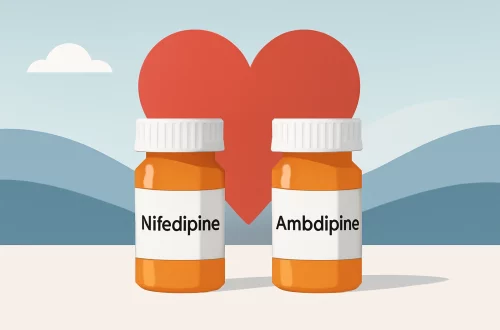
Understanding Tedy Bruschi’s Stroke and Its Impact on Recovery
Understanding the complexities of stroke and its aftermath is essential, particularly when it involves public figures like Tedy Bruschi. As a renowned football player and sports commentator, Bruschi’s personal experience with stroke not only highlights the medical aspects of the condition but also underscores the emotional and psychological challenges that accompany recovery. Stroke is not merely a medical emergency; it is a life-altering event that can affect cognitive functions, physical abilities, and emotional well-being.
Individuals who have experienced a stroke often face a long and arduous journey toward recovery. This journey is not solely defined by physical rehabilitation but also involves addressing the psychological impacts of such an event. Understanding the multifaceted nature of stroke recovery can help provide insight into the struggles that many stroke survivors endure, as well as the triumphs they achieve. Tedy Bruschi’s story serves as a beacon of hope, illustrating the resilience of the human spirit in the face of adversity.
In this exploration of Tedy Bruschi’s stroke and its implications for recovery, we will delve into the medical aspects of stroke, the critical stages of rehabilitation, and the emotional support systems that play a vital role in recovery. By examining these components, we aim to shed light on the broader experience of stroke survivors and the unique challenges they encounter.
The Medical Aspects of Stroke
A stroke occurs when there is a disruption in the blood supply to the brain, leading to the death of brain cells. This disruption can be classified into two main types: ischemic and hemorrhagic. Ischemic strokes, which account for roughly 87% of all strokes, occur when a blood vessel supplying blood to the brain is obstructed. On the other hand, hemorrhagic strokes happen when a blood vessel ruptures, causing bleeding in or around the brain.
The risk factors for stroke are varied and can include high blood pressure, diabetes, smoking, and high cholesterol levels. Genetics and lifestyle choices also play a significant role in a person’s likelihood of experiencing a stroke. Recognizing these risk factors is crucial for prevention and early intervention.
When Tedy Bruschi suffered a stroke, it was a wake-up call not only for him but also for many fans and the general public. His experience illustrated the importance of awareness regarding stroke symptoms, which can include sudden numbness or weakness, confusion, trouble speaking, and difficulty walking. These symptoms warrant immediate medical attention, as timely intervention can significantly impact recovery outcomes.
Understanding the medical context of stroke provides a foundation for recognizing the importance of immediate action. The faster a patient receives treatment, the better the chances of minimizing brain damage and improving recovery prospects. Following a stroke, patients often undergo various diagnostic tests, such as CT scans or MRIs, to assess the extent of brain damage and formulate a treatment plan.
This medical framework is vital for both patients and their families, as it sets the stage for the rehabilitation process that follows a stroke. The journey is often complex, requiring a comprehensive understanding of how the brain functions and the various therapies available to aid recovery.
The Rehabilitation Journey
Rehabilitation after a stroke is a critical component of recovery and can often take months or even years. The rehabilitation process typically begins shortly after the stroke, often while the patient is still hospitalized. The primary goal is to help the individual regain as much independence and functionality as possible.
Physical therapy is a cornerstone of stroke rehabilitation. It focuses on regaining movement and strength, particularly in limbs that may have been affected. Occupational therapy is equally important as it helps stroke survivors relearn daily activities, such as dressing, cooking, and personal care. Speech therapy may also be necessary for those who experience difficulties with communication or swallowing.
The rehabilitation team usually comprises a multidisciplinary group of healthcare professionals, including physical therapists, occupational therapists, speech therapists, and neuropsychologists. This diverse team works collaboratively to create a tailored rehabilitation plan that addresses the unique needs of the stroke survivor.
Emotional and psychological support is another vital aspect of rehabilitation. Many stroke survivors experience feelings of frustration, anger, or depression as they navigate their recovery. Support groups can provide a sense of community, allowing individuals to share their experiences and feelings with others who understand their struggles.
Tedy Bruschi’s own journey through rehabilitation serves as an inspiring example for many. His determination to recover and return to a fulfilling life showcased the power of perseverance. Bruschi’s story emphasizes that recovery is not merely about physical healing but also about mental resilience and emotional strength.
Progress in rehabilitation can be slow and incremental, which can be discouraging. However, celebrating small victories and setting achievable goals can significantly enhance motivation and outlook. Understanding that recovery is a marathon, not a sprint, is crucial for stroke survivors and their families.
The Role of Emotional Support
The emotional aftermath of a stroke can be profound and far-reaching. Survivors often face a myriad of feelings, including fear, anxiety, and uncertainty about their future. These emotional responses can significantly affect the recovery process, making support systems essential.
Family support plays an integral role in a stroke survivor’s journey. Loved ones often become caregivers and advocates, assisting with daily tasks and providing encouragement. It is vital for family members to also prioritize their own well-being, as caregiving can be both physically and emotionally taxing.
In addition to family support, professional counseling can be beneficial. Therapists specialized in dealing with stroke recovery can help individuals process their emotions and develop coping strategies. Group therapy sessions can also foster a sense of belonging and understanding, allowing survivors to connect with others who share similar experiences.
Tedy Bruschi has often spoken about the importance of mental health in his recovery journey. His openness regarding the emotional challenges he faced serves as a reminder that stroke recovery is not just about physical rehabilitation. Mental health is equally vital in achieving a successful recovery.
Furthermore, engaging in social activities and hobbies can help stroke survivors regain a sense of normalcy and purpose. Whether it’s participating in adaptive sports or joining community groups, these activities can help build confidence and combat feelings of isolation.
Ultimately, the emotional landscape of stroke recovery is complex and requires a holistic approach that encompasses physical, emotional, and psychological healing. Creating a robust support network can make all the difference in navigating the challenges of recovery.
In conclusion, Tedy Bruschi’s stroke experience sheds light on the multifaceted nature of stroke recovery. From understanding the medical implications to navigating the rehabilitation journey and addressing emotional challenges, each aspect plays a crucial role in the overall recovery process.
This article is for informational purposes only and does not constitute medical advice. For any health concerns or medical conditions, it is essential to consult with a healthcare professional.




